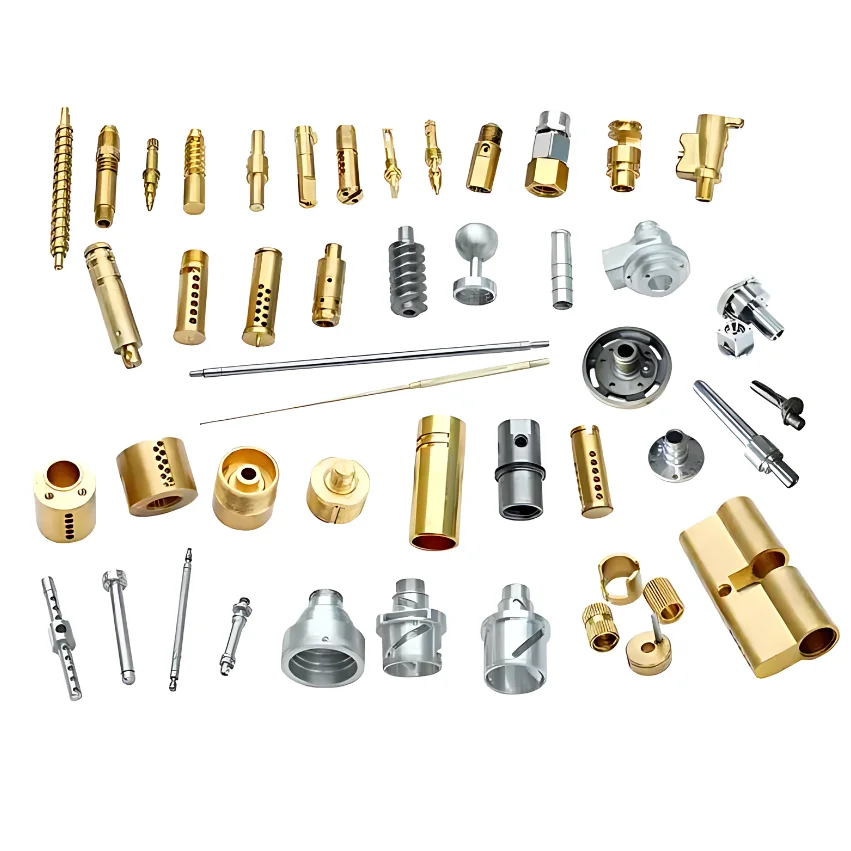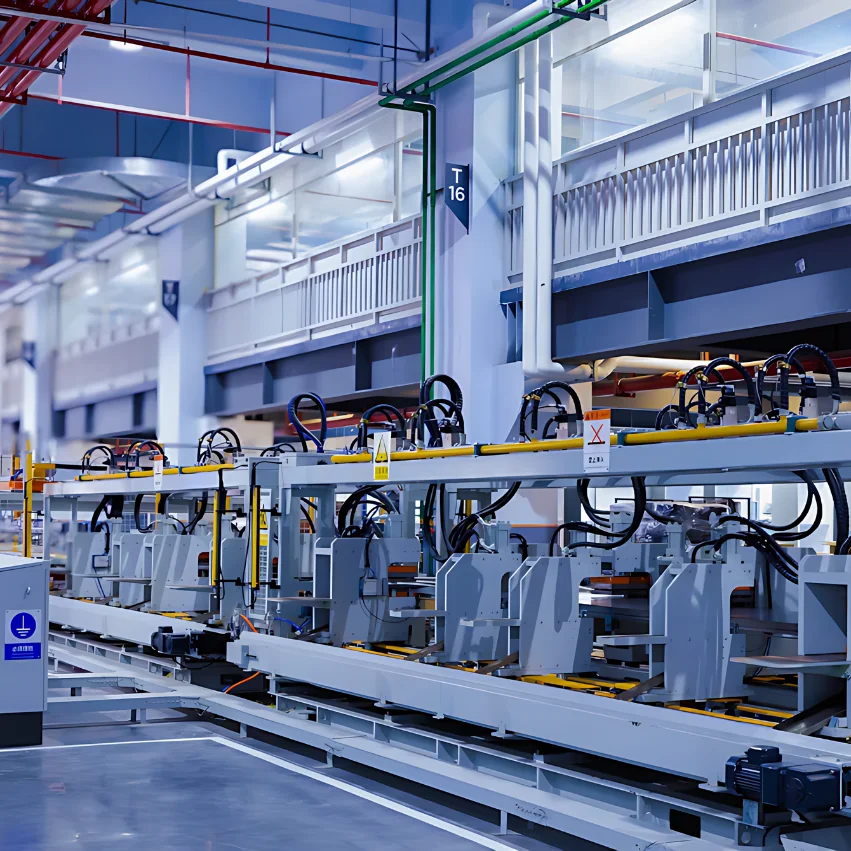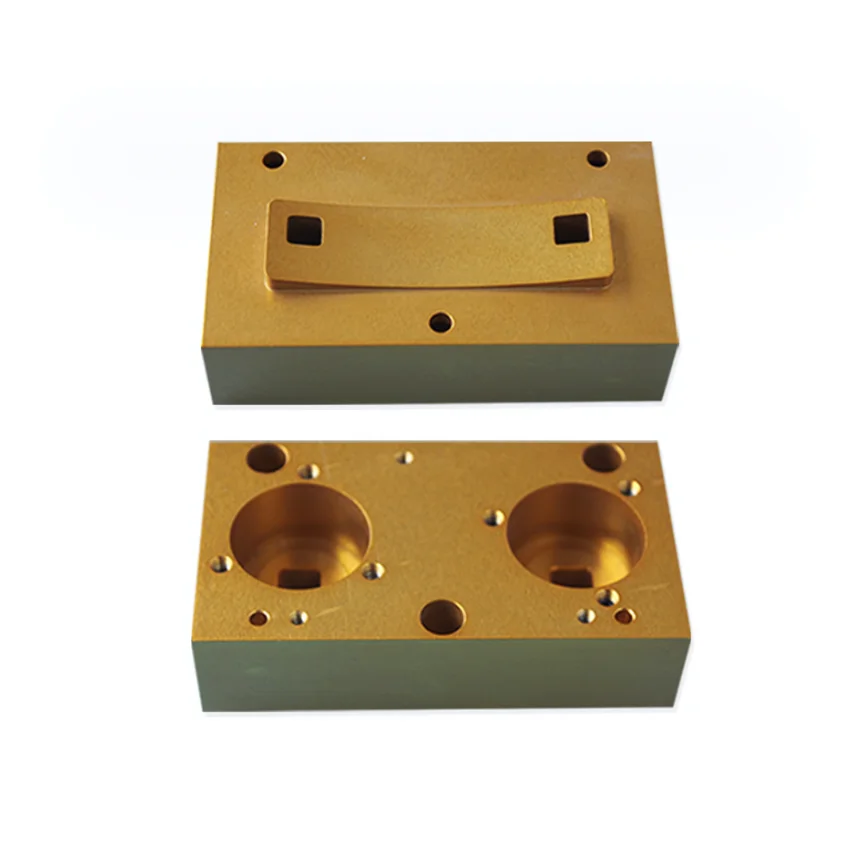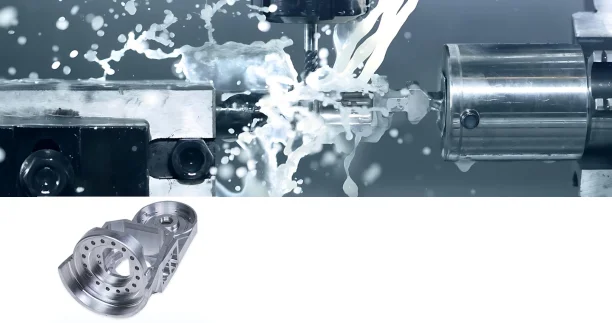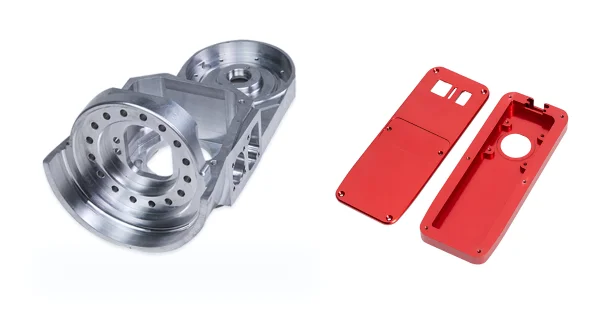CNC milling, short for Computer Numerical Control Milling, is a manufacturing process that uses computer control and rotating multi-point cutting tools to gradually remove material from a workpiece. Complex designs and shapes can be achieved. This article will take you to understand the components, processes, and applications of CNC milling.
The Components of a CNC Milling Machine
The frame and structure of a CNC milling machine form the sturdy foundation upon which the entire operation relies. Typically constructed from high-quality materials such as cast iron or steel, the frame provides stability and rigidity essential for maintaining precision during the machining process. Its robust construction ensures minimal vibrations, safeguarding against deviations in the cutting path and preserving the integrity of the final product.
The Spindle
At the core of every CNC milling machine lies the spindle, a vital component responsible for rotating the cutting tool at high speeds. This rotational motion enables efficient material removal while maintaining accuracy. Various types of spindles are utilized based on specific machining requirements, including motorized spindles for high-speed operations and belt-driven spindles for applications demanding varying torque levels.
Types of Spindles and Their Uses
- Motorized Spindles: Ideal for high-speed milling operations, delivering rapid material removal rates with exceptional precision.
- Belt-Driven Spindles: Suited for applications requiring adjustable torque levels, offering versatility in handling diverse cutting tasks.
Control Panel
The control panel serves as the brain of the CNC milling machine, housing an array of sophisticated controls that govern every aspect of the machining process. Operators can input commands, adjust parameters, and monitor performance through this centralized interface, ensuring seamless coordination between different machine components.
Basic Control Panel Functions
- Power Controls: Enable startup and shutdown procedures to initiate or conclude machining operations.
- Speed Adjustments: Allow operators to regulate spindle speed according to specific material characteristics and cutting requirements.
- Tool Positioning: Facilitate precise positioning of cutting tools within proximity to the workpiece surface.
Cutting Tools
In CNC milling, the choice of cutting tools significantly influences the precision and quality of the final machined components. These tools are meticulously designed to remove material from the workpiece with utmost accuracy and efficiency, making them indispensable in achieving intricate geometries and tight tolerances.
Common Types of Cutting Tools Used in CNC Milling
- End Mills: These versatile cutting tools feature cutting edges at the tip and along the sides, allowing for precise contouring, slotting, and pocketing operations. End mills come in various designs such as square end mills, ball end mills, and corner radius end mills to accommodate different machining needs.
- Drills: Essential for creating holes in the workpiece, drills are available in numerous configurations including twist drills, center drills, and spot drills. They enable accurate hole placement and dimensioning while ensuring clean entry and exit surfaces.
- Face Mills: Designed for facing and shoulder milling tasks, face mills utilize multiple inserts or cutting edges to swiftly remove material across large surface areas. This type of cutting tool excels in producing flat surfaces with exceptional finish quality.
- Reamers: Employed for achieving precise dimensional accuracy and superior surface finishes in existing holes, reamers refine the internal diameter of bores to meet exact specifications.
- Ball Nose Cutters: Ideal for 3D contouring and sculpting operations, ball nose cutters feature a rounded end that smoothly blends curved surfaces while maintaining sharp detail definition.
By carefully selecting the appropriate cutting tools based on specific machining requirements, operators can optimize the CNC milling process to deliver outstanding results with unparalleled precision.
The Process of CNC Milling
CNC milling involves a systematic workflow that transforms digital designs into physical components with remarkable precision and efficiency. Understanding the key steps in the CNC milling process is essential for optimizing production and ensuring top-notch quality.
Step 1: Creating the CAD Model
The CNC milling process commences with the creation of a detailed Computer-Aided Design (CAD) model. This digital representation encapsulates the exact dimensions, geometries, and specifications of the intended part, serving as the blueprint for subsequent manufacturing stages. Designers leverage specialized software to meticulously craft the CAD model, incorporating intricate details and tolerances to align with precise requirements.
Step 2: Converting CAD to CAM
Once the CAD model is finalized, it undergoes a crucial transformation into Computer-Aided Manufacturing (CAM) instructions. This conversion entails the generation of toolpaths and machining strategies that dictate how the CNC machine will execute the manufacturing operations. CAM software analyzes the intricacies of the design and translates them into actionable commands for the CNC milling machine, optimizing tool movements and material removal processes.
Step 3: Setting Up the CNC Milling Machine
Preparation is paramount in ensuring smooth and efficient CNC milling operations. Setting up the CNC milling machine involves securing the workpiece onto the designated fixture or workholding device, and aligning it precisely to facilitate accurate machining. Additionally, operators install and calibrate cutting tools based on their specific functions and dimensions, configuring spindle speeds and feed rates according to material properties and machining requirements.
Step 4: The Milling Process
With all preparations in place, the milling process unfolds as programmed by the CAM instructions. The CNC machine meticulously follows predefined toolpaths, orchestrating intricate movements to sculpt raw material into intricately designed components. Throughout this phase, operators closely monitor critical parameters such as cutting forces, tool wear, and surface finishes to ensure optimal performance while safeguarding against deviations from design specifications.
Troubleshooting Common CNC Milling Issues
Issue 1: Inaccurate Cuts
Inaccuracies in machined components can arise due to various factors such as improper tool calibration, suboptimal spindle speeds, or inaccuracies in workpiece positioning. Addressing this issue necessitates meticulous inspection of machine settings, tool integrity checks, and recalibration procedures to rectify deviations from desired dimensional accuracies.
Issue 2: Tool Breakage
Tool breakage poses a significant challenge in CNC milling, impacting both productivity and component quality. Preventive measures involve a comprehensive analysis of cutting parameters such as speeds, feeds, and depths of cut to ensure they align with material characteristics and tool capabilities. Additionally, regular maintenance routines including tool inspections and replacements mitigate the risk of unexpected breakages during machining operations.
Applications and Advantages of CNC Milling
Aerospace and Defense
The aerospace and defense sectors are major beneficiaries of CNC milling technology, leveraging its capabilities to manufacture complex components critical to aircraft, spacecraft, and military equipment. From precision-engineered engine parts to complex structural elements, CNC milling ensures the production of high-strength, lightweight components that meet strict quality standards.
Automotive
In the automotive industry, from engine blocks and transmission components to complex interior features, CNC milled parts help improve a vehicle’s overall efficiency and reliability. The seamless integration of advanced materials and complex designs highlights the importance of CNC milling in driving innovation in the automotive industry.
Consumer Electronics
The consumer electronics sector relies on CNC milling to produce the intricately designed housings, connectors, and internal components that define the functionality and appeal of electronic devices. Whether it’s a smartphone, laptop, or wearable device, CNC milling helps create stylish, durable parts with precise dimensions and intricate details.
Advantages of CNC Milling
Precision and Consistency:
The hallmark advantage of CNC milling lies in its unparalleled precision and consistency throughout the manufacturing process. By meticulously following digital design specifications with minimal deviation, CNC milling machines ensure that each component meets exact dimensional requirements with remarkable accuracy. This level of precision translates into superior product quality and reliability across diverse applications.
Flexibility and Versatility:
CNC milling offers an exceptional degree of flexibility and versatility in accommodating diverse machining needs across various industries. With the capability to handle an extensive range of materials including metals, plastics, composites, and more, CNC milling machines adapt seamlessly to evolving manufacturing requirements. Moreover, they can execute complex geometries with ease while supporting rapid prototyping or large-scale production runs.
Efficiency and Speed:
The efficiency and speed inherent in CNC milling operations significantly elevate manufacturing productivity by streamlining processes without compromising quality. Through optimized toolpaths and automated material removal techniques, CNC milling machines deliver swift turnaround times while upholding stringent quality standards. This efficiency not only accelerates production cycles but also minimizes operational costs associated with manual interventions.
Final Thoughts
When selecting a CNC milling machine, factors such as workpiece size, material compatibility, spindle speed changes, and tool capacity are key considerations that cannot be ignored. Metal Fabricators must conduct a comprehensive evaluation of these aspects to ensure that the selected equipment can be seamlessly integrated into existing manufacturing processes to meet changing production needs.
If you need precision CNC milling, you can contact us. We are a company specializing in providing precision metal stamping and machining services to various industries.
Related:
What does a metal fabricator do?
11 types of CNC machines and what they do

